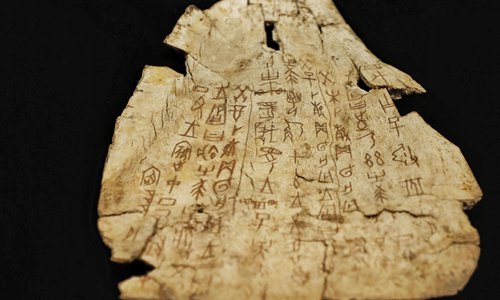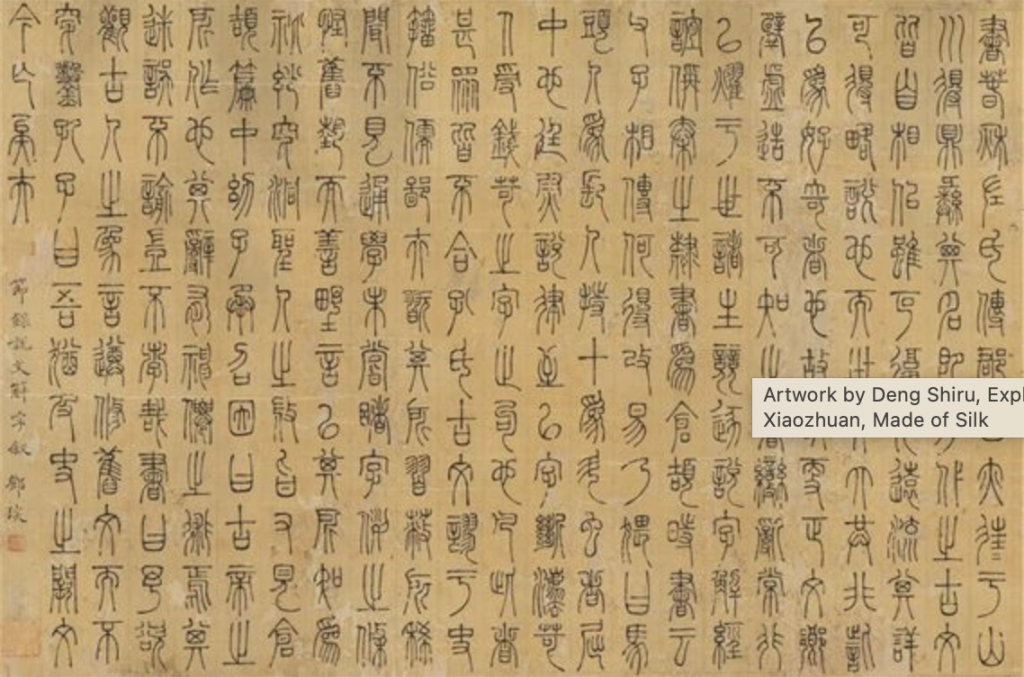
The Chinese written language and the unsolvable root of origin.

The Chinese written language is quite unique because no one knows where it truly came from and what the first evidence of it was. There are a few theories of the writing’s inception, but each of them involves a legendary character whose name was Cangjie. The first is that he was born knowing how to write, which doesn’t necessarily feel like a logical explanation. The other is that because he worked for the Yellow Emperor, he was instructed to create this written form of language. Therefore, he went out to observe the natural patterns such as bird footprints in the sand and implemented them in his pictographic language. Either way, these stories are mythological; his story was incorporated into Daoist mythology and was said to have four eyes and a dragon face as shown above.

As people flourish, so does their writing
Although it is uncertain of how it was invented, a clear development in Chinese writing is seen in the 2nd millennium BCE during the Shang dynasty. According to Patricia Buckley, the scholar, the reason there wasn’t evidence of previous writing in China was that most of them were likely to have been written on materials like wood, bamboo, and silk which were perishable. However, the ancient Chinese began to use oracle bones which were bones that were cleaned and inscribed with marks. They were made from shoulder blades of oxen or plastrons of turtles. As said in the world history encyclopedia, oracle bones were used by diviners (also known as psychics), who answered questions of the future using these tools. If a person had a question the diviner would carve it onto the bone and place it by the fire to make it crack. Once it cracked, the lines made were deciphered by the diviner to solve the inquiry. It was thought that the oracle bones were a way for the spirits of the ancestors to communicate with diviners directly and ultimately affect the divination.

Finally. The end of confusion as pictographs become logographs
As time went on, Chinese scripts began to evolve from Jiaguwen to Lishu. Jiaguwen was the starting script that was used on oracle bones in 1600-1000 BCE. It was primarily made up of pictographs that represented objects connected to different concepts. Eventually, Jiaguwen’s script turned to Dazhuan which began in 1000 BCE and lasted until 700 BCE. Dazhuan was mainly pictographic as well but it became more refined by adding new characters. The next script was Xiaozhuan which began to develop in 700 BCE. This script is still used to this present day and it began to be the beginning of logographic writing. The final important script started in 500 BCE: the Lishu script. Lishu was mostly used for documents and government affairs. One can find Lishu on bamboo scrolls that were tied together with string as seen above. Nevertheless, as aesthetics became more important to poetry and calligraphy, more scripts were formed to be more cursive. These three scripts that prevailed in aesthetics were Kaishu, Xingshu, and Caoshu.

An incredible legend that would go on to impact several other asian countries
From objects to symbols, the scripts had to evolve to become more used and to write more concepts. It overall paid off because Chinese writing became incredibly influential and moved on to affect the written languages of Korea, Japan, Vietnam, and several other countries.
References
https://ancientchinesemythology.blogspot.com/2013/08/cangjie-chinese-god-of-writing.html
https://www.worldhistory.org/Chinese_Writing/
https://www.britannica.com/topic/Chinese-writing#ref255828
https://www.globaltimes.cn/content/1167735.shtml
https://www.green-coursehub.com/research-blog/bamboo-and-wooden-slip-chinese-bamboo-book
https://www.mutualart.com/Artwork/Explanation-of-Xiaozhuan/4593DFDFFD05C0AC
https://www.thechairmansbao.com/brief-history-chinese-characters/
